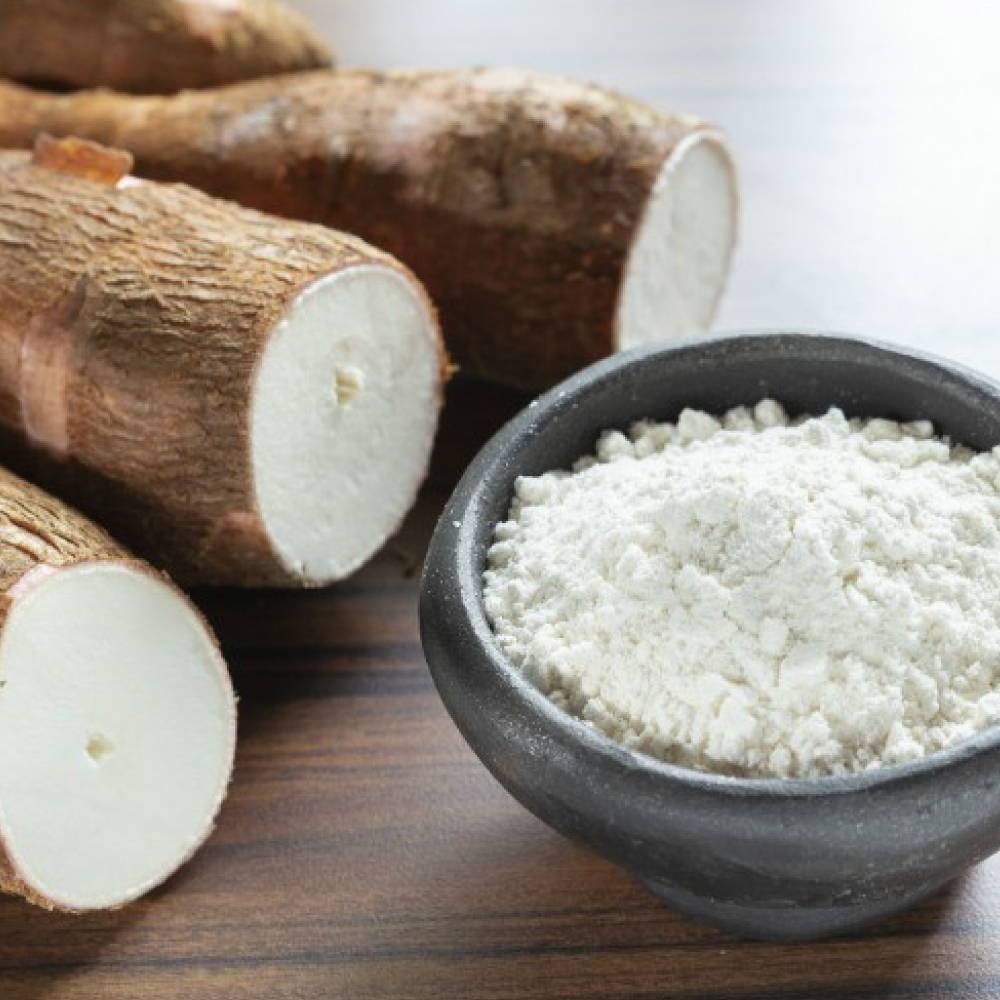Cassava (also known as yuca or manioc) is an important food crop widely used in various industries, from food processing to industrial production. From cassava roots, several products can be made, with tapioca starch and cassava flour being the most common. However, not everyone knows the difference between these two products. Below are the key differences:
1. Production Process
- Tapioca Starch: Tapioca starch is produced by extracting the starch from the cassava root. The cassava roots are peeled, cleaned, and then ground into a fine paste. This paste is then soaked in water to separate the starch from the fibrous material. The starch is then settled, filtered, and dried to produce pure tapioca starch, which is free from fiber or other impurities.
- Cassava Flour: Cassava flour, on the other hand, is made by drying or roasting the whole cassava root (with or without peeling) and then grinding it into a fine powder. This process retains the fiber and other natural components of the cassava root, so cassava flour is not as pure as tapioca starch.
2. Nutritional Content
- Tapioca Starch: Tapioca starch is mainly composed of starch, with a high carbohydrate content, low fiber, and virtually no protein or fat. It is easy to digest and is often used as a thickening agent in many dishes, as well as in the food and pharmaceutical industries.
- Cassava Flour: Cassava flour contains both starch and fiber, as well as protein and other nutrients from the cassava root. Because it contains more fiber, cassava flour may have higher nutritional value and be more difficult to digest compared to tapioca starch.
3. Uses and Applications
- Tapioca Starch: Due to its purity and excellent thickening properties, tapioca starch is widely used in cooking, baking, making sweet treats, and in various industrial products. It is also used in the pharmaceutical and cosmetic industries, as well as in paper production.
- Cassava Flour: Cassava flour is often used in traditional dishes, such as baking, making desserts, or as an ingredient in other recipes. Because it contains fiber and natural components, cassava flour may offer a more natural flavor and higher nutritional value compared to tapioca starch.
4. Color and Texture
- Tapioca Starch: Tapioca starch has a pure white color, is very fine, and has no distinctive smell or taste. When mixed with water, tapioca starch forms a transparent, highly adhesive paste.
- Cassava Flour: Cassava flour has an off-white or pale yellow color, usually with a coarser texture, and may have a slight, natural cassava scent. When mixed with water, cassava flour does not become transparent and does not have the same high adhesive properties as tapioca starch.
Conclusion
Tapioca starch and cassava flour, while both derived from the same raw material, have significant differences in production processes, nutritional content, uses, and appearance. Depending on your intended use, you can choose the appropriate product to ensure the best quality and effectiveness.


